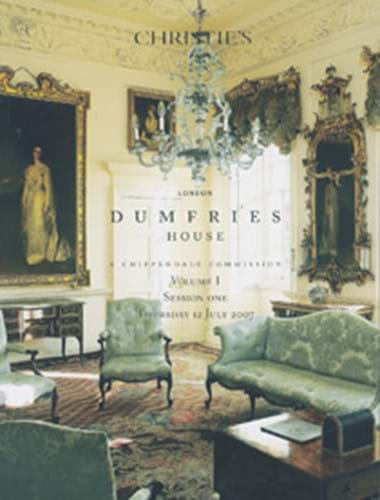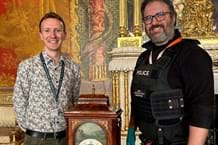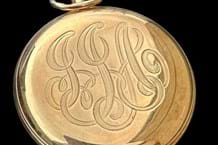
The sale of the decade turned into the save of the decade last week although the rescue plan went down to the wire.
Thanks to a £45m funding package, Dumfries House, the Adam-designed Scottish stately home near Cumnock, Ayrshire, and its collection of wonderfully preserved Chippendale interiors will be kept together and saved for the nation. But the deal was only finalised hours before the house and grounds were due to be sold and just two weeks before Christie's two-day auction of the contents.
The success of the rescue plan was largely due to the intervention of a high-profile white knight, the Prince of Wales, who was instrumental in securing a large slice of the requisite funding.
The Marquess of Bute, who owns Dumfries House, announced his intention to sell in 2004. An earlier attempt to save the house and contents for the nation fell through when negotiations with the National Trust for Scotland broke down the following year.
The future looked bleak, especially when Christie's announced this April that a two-day auction of the contents had been fixed for July 12 and 13.
But concern about the break-up of such a rare, untouched 'time capsule' from the 1750s persisted and in March a pressure group, SAVE Britain's Heritage, was established in a last-ditch attempt to mount a high-profile campaign to keep it together.
First up to the table were The Art Fund and the Monument Trust with pledges of £2m and £4m (later increased to £2.25m and £9m respectively), along with the Garfield Weston Foundation and Sir Siegmund Warburg's Voluntary Settlement. But with only a month to go before Christie's auction, the tally stood at just £7m, well short of the sum needed to keep house and grounds together and maintain it.
It was then that the frantic last-minute fund-raising round began. Significant new pledges included £7m from the National Heritage Memorial Fund, the fund of last resort, and £5m from the Scottish Government body Historic Scotland.
With £25m raised, the clincher came with Prince Charles's input. As well as galvanising other contributing bodies, he raised and guaranteed a £20m loan through his Charities Foundation, providing the wherewithal to fund the total cost of the project.
In an innovative and imaginative move, the purchase plan includes the offer to buy 66 acres of land (48 acres of field and 18 acres of woodland) near Cumnock. Subject to planning regulations the Prince's Charities Foundation will develop this to provide new homes and community facilities. This will not only help towards repayment of the loan, it will also provide regeneration and employment in what is seen as an economically deprived area.
A Clarence House spokesperson for the Prince said the development would be "Poundbury [the Prince's model village experiment in Dorset] in terms of principle" but not in terms of how it will look.
Although this impressive rescue bid involved input from numerous quarters, a single entity needs to buy the house and contents from the vendor. The house will be bought in a private treaty sale by The Art Fund, one of three bodies who have the requisite schedule 3 powers that allow private owners selling valuable heritage items to access various tax breaks.
Thereafter the presentation and maintenance of the house, its opening to the public (hopefully next year) and use of its facilities, will be organised by an independent trust known as The Great Steward's Dumfries Trust, which is in the process of being established for this purpose.
Although hailed as an architectural gem from the Scottish Enlightenment, Dumfries House was little known or seen. That will now change as many more people will get the chance to visit.
If Christie's were disappointed after their four-year marathon of valuing and cataloguing the contents of a house that would have rewritten the auction record books for English furniture values, there was no hint of this in their comment on the outcome.
"Over the last four years, Christie's has supported John Bute's hope of finding a negotiated private treaty sale solution for Dumfries House and its contents," said Charles Cator, Christie's deputy chairman - an acknowledgment, perhaps, that this was a sale that would always attract comment on heritage issues.
"We look forward to supporting the future of Dumfries House and hope that it will be admired and appreciated by the public long into the future," he added.
The mammoth two-volume, 634-lot catalogue that Christie's produced for the auction will stand as a fascinating inventory of the contents and of the sale that never was.
The auctioneers have announced that the limited number of catalogues still available will for offered for sale at a reduced price of £20 (US$40) + postage/packing and the funds raised will be donated to The Great Steward's Dumfries House Trust.
Bu Anne Crane




